I have a fisheye lens:
I would like to undistort it. I apply the FOV model:
rd = 1 / ω * arctan (2 * ru * tan(ω / 2)) //Equation 13
ru = tan(rd * ω) / 2 / tan(ω / 2) //Equation 14
as found in equations (13) and (14) of the INRIA paper "Straight lines have to be straight" https://hal.inria.fr/inria-00267247/document.
The code implementation is the following:
Point2f distortPoint(float w, float h, float cx, float cy, float omega, Point2f input) {
//w = width of the image
//h = height of the image
//cx = center of the lens in the image, aka w/2
//cy = center of the lens in the image, aka h/2
Point2f tmp = new Point2f();
//We normalize the coordinates of the point
tmp.x = input.x / w - cx / w;
tmp.y = input.y / h - cy / h;
//We apply the INRIA key formula (FOV model)
double ru = sqrt(tmp.x * tmp.x + tmp.y * tmp.y);
double rd = 1.0f / omega * atan(2.0f * ru * tan(omega / 2.0f));
tmp.x *= rd / ru;
tmp.y *= rd / ru;
//We "un-normalize" the point
Point2f ret = new Point2f();
ret.x = (tmp.x + cx / w) * w;
ret.y = (tmp.y + cy / h) * h;
return ret;
}
I then used the OpenCV remap function:
//map_x and map_y are computed with distortPoint
remap(img, imgUndistorted, map_x, map_y, INTER_LINEAR, BORDER_CONSTANT, Scalar(0, 0, 0));
I managed to get the distortion model from the lens manufacturer. It's a table of image_height as a function of the field angle:
Field angle(deg) Image Height (mm)
0 0
1 height1
2 height2
3 height3
...
89 height89
90 height90
To give an idea, each height is small and inferior to 2mm.
I found an interesting paper here: https://www.altera.com/content/dam/altera-www/global/en_US/pdfs/literature/wp/wp-01073-flexible-architecture-fisheye-correction-automotive-rear-view-cameras.pdf
How can I modify my pixel-unit undistortion function to factor in the mm-unit table provided by the manufacturer in order to have the most accurate possible undistorted image?
